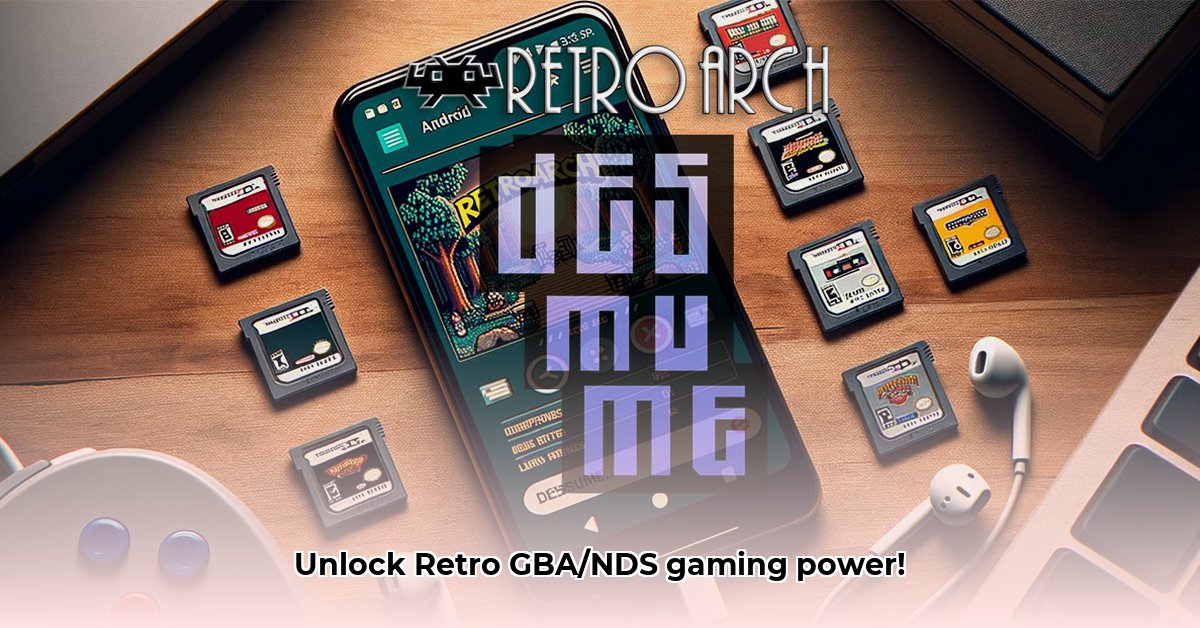
Want to relive the magic of Nintendo DS gaming on your PC? This guide provides a comprehensive walkthrough on setting up and optimizing DeSmuME, a popular Nintendo DS emulator, within RetroArch. We'll cover everything from downloading necessary components to troubleshooting common issues, ensuring a smooth and enjoyable retro gaming experience.
Getting Started: Prerequisites
Before we begin, ensure you have the following:
- RetroArch: Download the latest version from the official RetroArch website. This is the frontend that will run the DeSmuME core.
- DeSmuME Core: This is the specific plugin that allows RetroArch to emulate Nintendo DS games. We'll detail its installation shortly.
- Nintendo DS ROMs (.nds files): These are the actual game files. Crucially: Only use ROMs for games you legally own. Using ROMs for games you don't own is illegal.
- BIOS Files (Optional but Recommended): These files contain firmware instructions necessary for DeSmuME to properly emulate the DS system. We'll explain where to obtain these legally and their importance later.
Installing the DeSmuME Core
Adding the DeSmuME core to your RetroArch setup is straightforward:
- Launch RetroArch: Open the RetroArch application.
- Navigate to Online Updater: This section usually sits within the main menu.
- Select Core Updater: This will display a list of available cores (emulators).
- Search for DeSmuME: Use the search function to quickly locate the DeSmuME core.
- Download and Install: Select the core and initiate the download. RetroArch will automatically install it. You should now see DeSmuME listed among your available cores.
BIOS and Firmware Setup: Ensuring Compatibility
While not always strictly necessary, BIOS files can significantly improve compatibility and performance. They mimic the original DS system's firmware. Where to find them? Stick to reputable sources within the emulation community. Downloading from unreliable websites poses security risks.
After obtaining the BIOS files (typically bios7.bin, bios9.bin, and potentially firmware.bin), you need to configure RetroArch to use them. This involves navigating to RetroArch's settings, selecting the DeSmuME core, and specifying the appropriate file paths for your BIOS files. Consult RetroArch's documentation if you need further guidance. Remember, using a BIOS file might slightly impact performance, so only use them if necessary for compatibility.
Configuration and Optimization: Fine-Tuning for Peak Performance
DeSmuME offers several settings to enhance both performance and visual quality. Experiment to find the optimal balance for your system.
| Setting | Description | Performance Impact | Recommendation |
|---|---|---|---|
| Resolution | Game window size. | High | Start low (e.g., 800x600), increase gradually. |
| Aspect Ratio | Screen proportions (4:3, 16:9, etc.). | Low | Experiment to find your preference. |
| Frame Skip | Skipped frames to improve speed at the cost of smoothness. | High | Use only if necessary. |
| Rendering Method | OpenGL or Software Rasterizer. | High | OpenGL generally faster, but may require a more powerful system. |
| Sound Quality | Audio Sample Rate and Quality. | Moderate | Adjust based on system capability. |
Higher-end systems can handle more demanding settings, while older systems may require lower settings for smooth gameplay.
Troubleshooting Common Issues
Encountering problems? Here are some solutions for common DeSmuME issues:
- Game Crashes: Ensure your DeSmuME core is up-to-date. Corrupted ROMs are another common cause.
- Audio Problems: Verify your sound settings both within RetroArch and your operating system.
- Slow Performance: Reduce graphical settings (resolution, frame skip, etc.). Consider if your system meets the game's minimum requirements. Try switching to a software rendering method if using OpenGL.
- BIOS Issues: Double-check the BIOS file paths in your RetroArch DeSmuME settings.
DeSmuME Limitations and Alternatives
While DeSmuME is powerful, some DS games may not run perfectly. This is inherent to emulation technology. If you encounter compatibility issues, research online forums for workarounds or consider alternative emulators like melonDS.
Conclusion
By following this guide you can successfully set up and optimize DeSmuME within RetroArch. Remember to use ROMs only for games you legally own. Enjoy your retro gaming experience!
⭐⭐⭐⭐☆ (4.8)
Download via Link 1
Download via Link 2
Last updated: Thursday, May 01, 2025